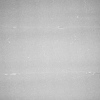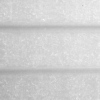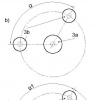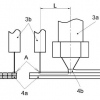Equipment for additive 3D printing with a design solution to eliminate cold joints
Technology description
| The name of the technology: | Equipment for additive 3D printing with a design solution to eliminate cold joints |
|---|---|
| Challenge: |
In technical practice, a large number of components appear in the production of which additive 3D printing technology is used. The limit of the technology used is the interfaces created at the points of contact of the individual layers. These areas can be characterized as cold joints, which negatively affect the cohesion of the layers of the printed structure and can be described as a joint of the melt with already cooled material. In these places, due to the action of forces and the surrounding environment, malfunctions occur. Printed models crack and need to be replaced. There are currently several suitable practices for limiting the effect of cold junctions. All currently known methods of modifying models are referred to as additional technological modifications that increase the time and financial demands of the production process. In addition, these additional technological operations are mainly intended for the modification of the external surface of the part, while the internal |
| Description: |
The technology makes it possible to eliminate the weakening of cohesion and the increased possibility of ingress of gaseous and liquid substances when using 3D printed structures in individual industries. Its contribution is thus the expansion of the application of the use of printed structures. At the same time, it reduces the economic demands of the process, which as a result means lower energy consumption and a better ecological impact on the environment. The device is equipped with a movement mechanism of the energy source. The energy source is capable of rotation around its own axis, around the axis of the printing assembly. A secondary axis is also an option for achieving higher strength of articulated components. The printing assembly with the movement mechanism of the energy source is further equipped with a control system to direct the thermal effect of the energy source to a specific, software-controlled or mechanically set area preceding the printed layer by rotating the energy source around the axis of the printing assembly. In this way, a better connection of the newly applied material with the material already applied on the printing pad is ensured. |
| Commercial opportunity: | The solution is suitable for research institutes, laboratories and especially for industrial practice. By using this solution, it is possible to achieve comparable results as with injected components, and the technology further pushes the limits of printed components, which would lead to their further, now mass, use. |
| IP protection status: | Granted patent of the Czech Republic No. 308793 |
| Development status: |
Phase 2Corresponds with TRL 3 and TRL 4 Feasibility study. There is a realistic design of the technology and the initial tests in the laboratory are leading to the specification of the technology requirements and its capabilities.
|
| Partnering strategy: | Collaboration licensing |
| More information: | https://isdv.upv.cz/doc/FullFiles/Patents/FullDocuments/308/308793.pdf |
| Images: | |
| Categories: | Mechanical Engineering |
| Owner of a technology: | Univerzita Tomáše Bati ve Zlíně |




